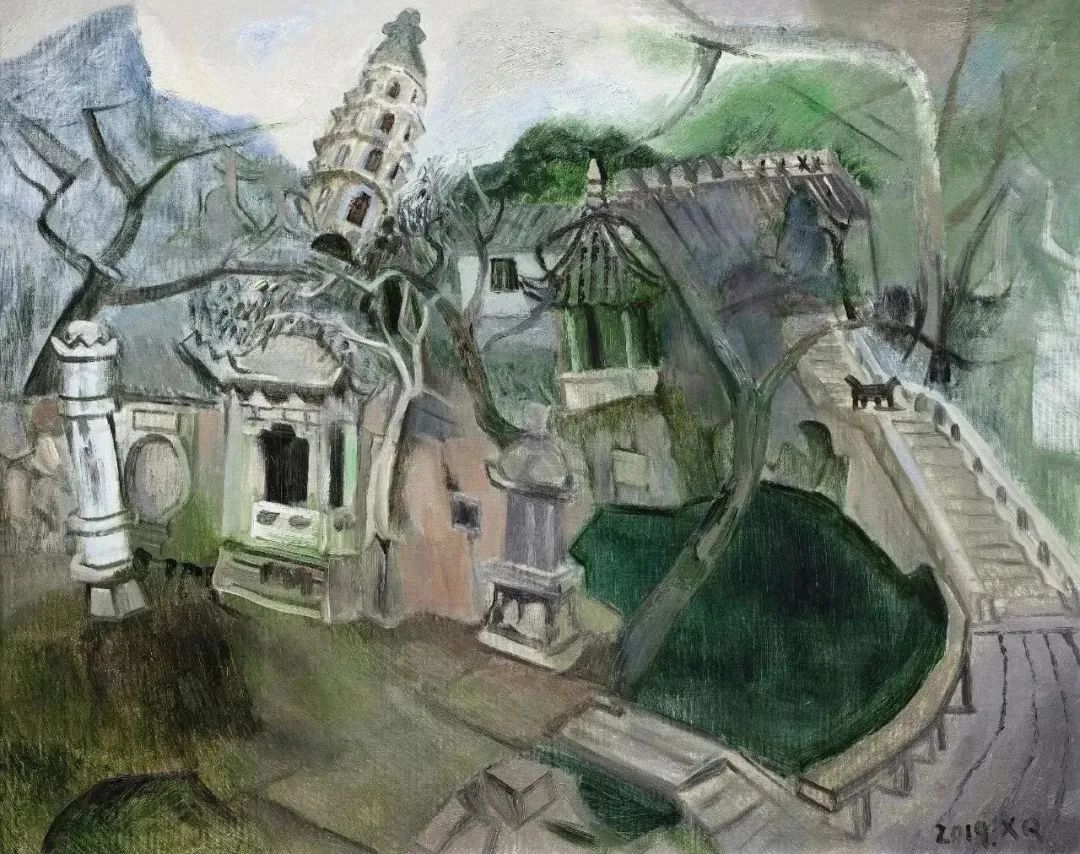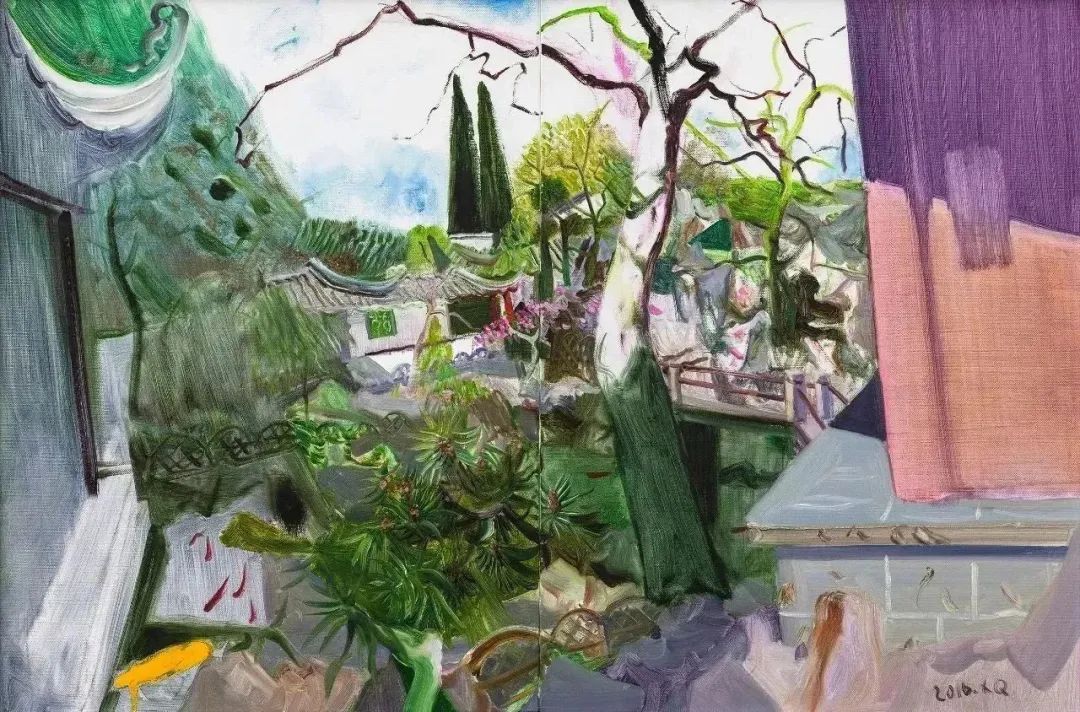In early spring, Zhang Xinquan and his students went to Liyuan in Wuxi city for sketching. Over the past decade, gardens have been the subject of Zhang Xinquan's persistent artistic creations, and being immersed in the spring ambiance of the gardens has become a source of inspiration for his work.
In traditional Chinese painting, gardens are a common subject. However, when it comes to oil painting, gardens often pose a challenge for many artists. "At a certain level, the principles of painting are universal," says Zhang Xinquan. In his hands, the subject of gardens in oil paintings actually offers greater flexibility and possibilities.
Using oil paintings to express the spirit of Eastern aesthetics is a unique endeavor in Zhang Xinquan's artistic exploration. He believes that the choice of materials plays an important role in his quest for a distinct painting language.
Q: Landscapes are an important theme in your artwork. What special emotions do you have towards this subject personally?
A: "Landscapes" have been a consistent and continuously explored theme in my artwork for over a decade. I have a strong affinity for gardens. After I moved to Suzhou to work more than 20 years ago, I began to delve into this subject.
Initially, I expressed gardens mostly through studio paintings, using relatively simple colours to pursue the unique and profound atmosphere or cultural connotations of gardens. Later, I started incorporating outdoor sketches to further explore the subject of gardens.
Outdoor sketches are very different from studio paintings. In spring, the vibrant scenery of blooming flowers and green willows is truly inspiring. As an artist, I have to consider how to enhance and capture the atmosphere of flourishing flowers and sunny spring days. When depicting gardens, I try to capture the sense of being on-site as quickly as possible and fully portray it. Of course, I also aim to showcase my own artistic style through the language of painting.
Q: Oil painting materials originate from the West. So, what insights do you have when expressing Chinese gardens with oil painting?
A: The introduction of oil painting to China is relatively recent, with only about a century of history. Before that, few people used oil painting as a medium to depict gardens. However, Chinese traditional painting and oil painting share some fundamental principles on a certain level, despite the difference in materials.
Chinese painting emphasizes the blending of ink and colours, while oil painting relies on oil-based materials. The most significant characteristic of oil painting is its expansive expressive space. It can be applied thinly or thickly, using visible brushstrokes or creating a smooth surface. Oil painting can convey deep emotions or simplicity. Considering my own understanding of oil painting materials, I believe it can be used to depict any subject matter.
Q: Does the material of the canvas have any impact on your plein air sketching and artistic creation? Do you have any preferences when choosing canvas?
A: The quality of the canvas does have an impact on my creative process. I prefer to use high-quality canvas for my work. Over the years, I have been using canvas materials from our local supplier, Phoenix-arts. I find their canvas to be of excellent quality, and it feels comfortable and familiar to work with.
I have a preference for linen canvas, as it has high quality and durability. The texture of the canvas will vary depending on the size of the artwork. In general, I choose a medium texture for regular-sized pieces, but for larger artworks, I may opt for a slightly coarser texture.
Q: Today, you also used our Phoenix brand oil paints. Could you provide an objective evaluation?
A: In the past year or two, I have been consciously or unconsciously using Phoenix brand oil paints. Some of the colours are exceptionally well made, such as vermilion red, chrome yellow, and cerulean blue.
In particular, the vermilion red is incredibly transparent and feels completely free of impurities. The cerulean blue is also very clean and transparent. These are the colours that I particularly like. Overall, the other colours are also good, with a noticeable improvement compared to before. They are not in the same league.
Q. What criteria are appropriate for students to consider when preparing and selecting materials for painting? Do you have any suggestions or experience?
A. The criteria for preparing and selecting materials may vary from person to person. Students should consider factors such as cost and personal preferences. When it comes to practice or training, it is acceptable to lower some requirements.
In my experience, I prioritize the quality of the paint. I prefer paints that have a smooth consistency, clear colour tones, and will not significantly change over the years. Additionally, the quality of white paint is crucial. Poor quality white paint may turn yellow after a few years.
Lastly, can you say a few words of blessing to Phoenix art supplies?
I have been in contact with Phoenix art supplies for over a decade. I admire your youthfulness, vitality, and boldness. Your products' quality is continuously improving, which impresses me.
I would also like to take this opportunity to wish Phoenix art supplies a larger and better development. From my perspective, the oil paints now show significant improvements compared to before, with some colours reaching the quality of imported paints. With the continuous effort of the Phoenix team, Phoenix art supplies will surely become even better!




